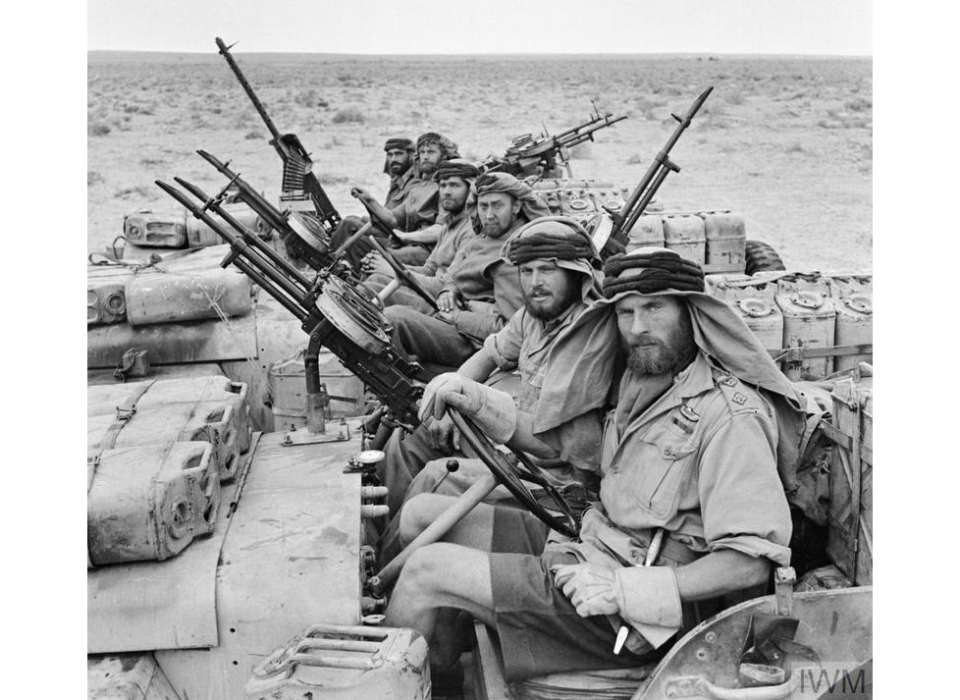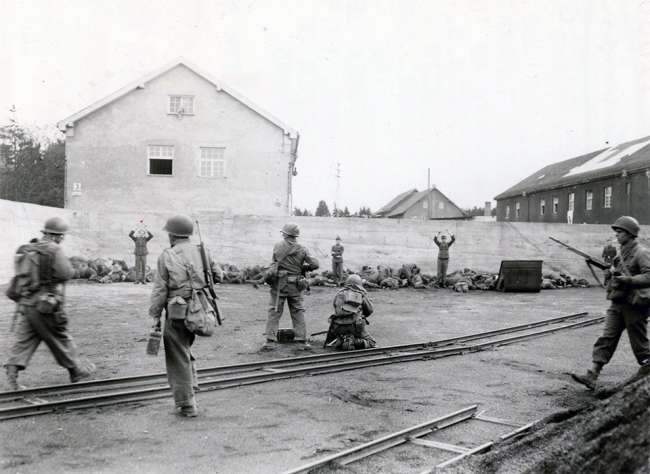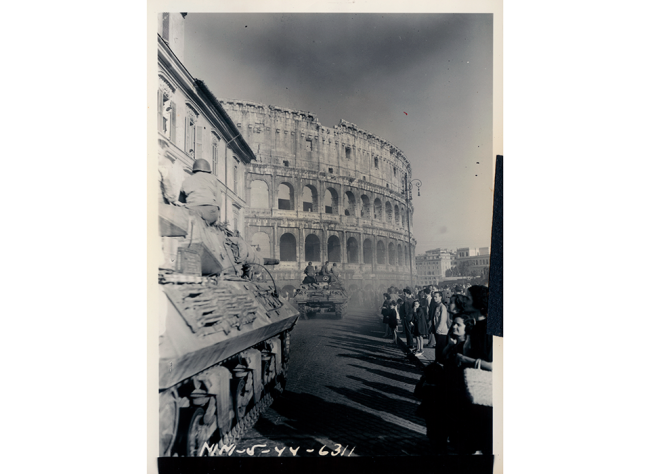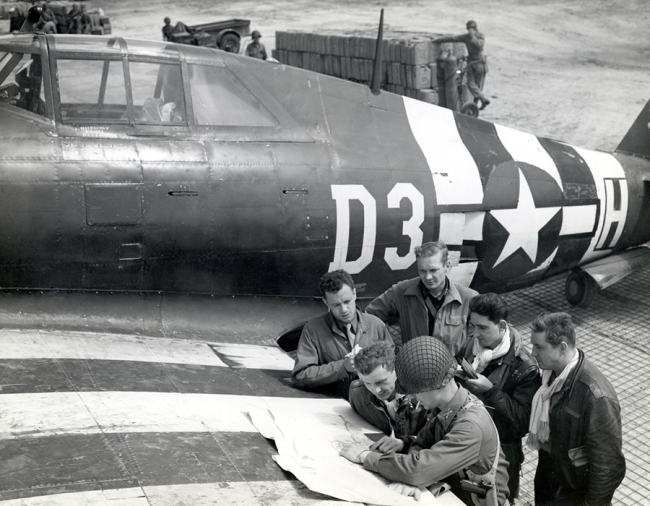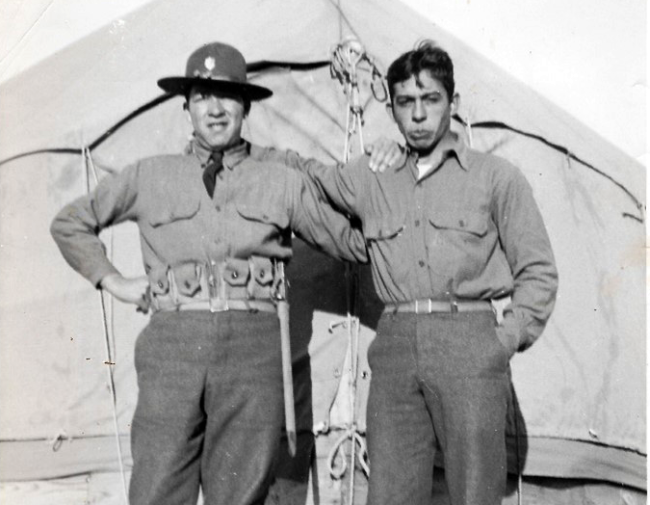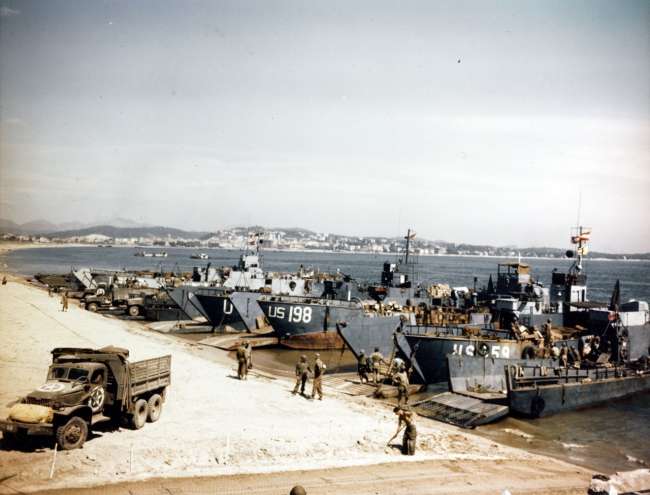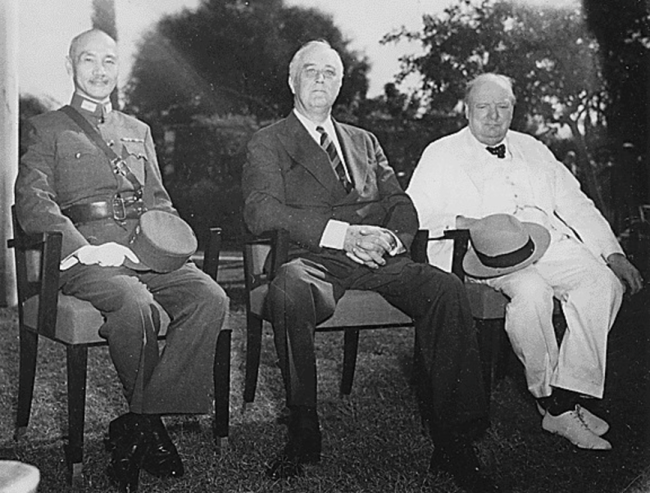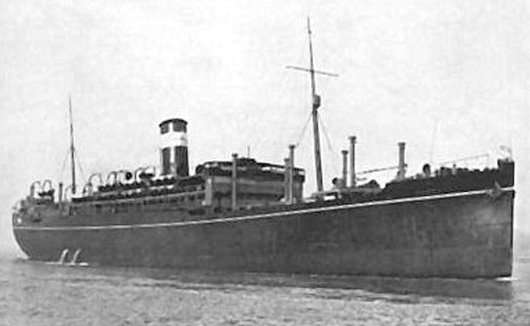A heavily armed jeep patrol from “L” Detachment SAS. 18 January 1943
The Long Range Desert Group (LRDG) and the Special Air Service (SAS) were the inspiration for a kitschy American TV show of the 1960’s.
In the 1960’s there was a wave of TV shows, mostly in black and white, set during World War II. One of the most popular shows for the 1966-1968 TV seasons was The Rat Patrol, a show in color, set in North Africa during 1942-1943. Each week, three Americans and an Englishman, roaring around the desert in American Jeeps armed with Browning .50 calibre machine guns, would destroy larger and better armed Afrika Korps convoys. A recurring opponent was a German captain, a cross between a Teutonic Wiley Coyote and the Good German trope of the 1960’s. The Rat Patrol was a fun show unburdened by historical accuracy or probability. The source of inspiration for the show was however quite real.
The Long Range Desert Group (LRDG) and the Special Air Service (SAS) were two special reconnaissance and commando units created during the Western Desert campaign and unlike the television Rat Patrol were composed of UK and Commonwealth troops. The SAS was reconstituted after the war ended and remained an obscure special forces unit until the SAS made world news during the Iranian Embassy hostage rescue on May 5th 1980. The LRDG, until recently, remained largely unknown. This article will focus on the LRDG, with a subsequent article examining the SAS.
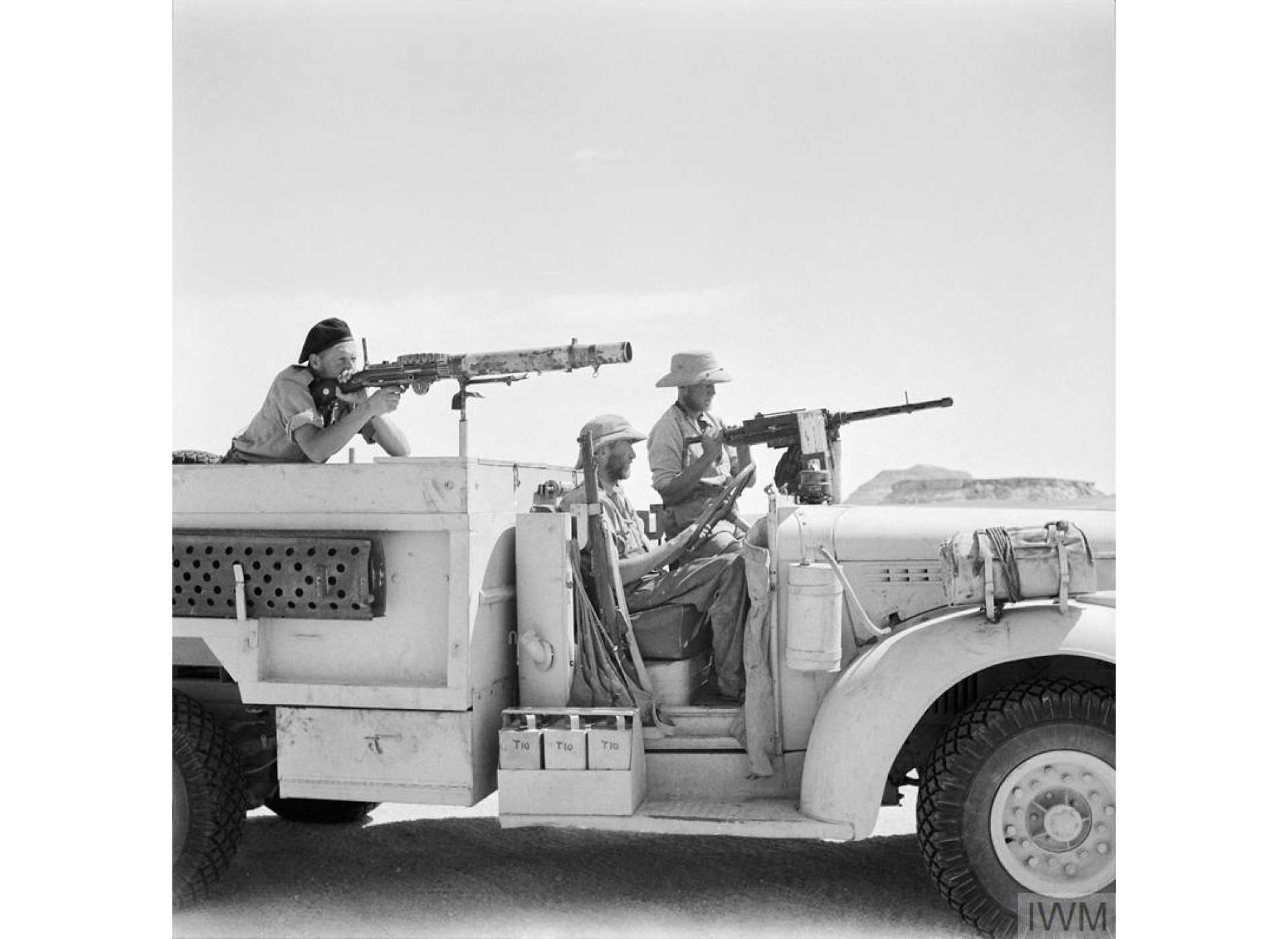
An LRDG Chevrolet truck and its three man crew. The gunner beside the driver is manning a Browning Mk II aircraft machine gun, while the gunner in the back has a Lewis gun. May 1942
Whereas the SAS’s primary mission was attacking Axis airfields and destroying the aircraft on the ground, the LRDG’s missions were primarily intelligence gathering and scouting. The members of the LRDG became highly skilled desert navigators and often transported intelligence officers and the SAS to accomplish their own missions. This led to the affectionate or derisive nickname, depending on one’s point of view, of “The Libyan Desert Taxi Service.”
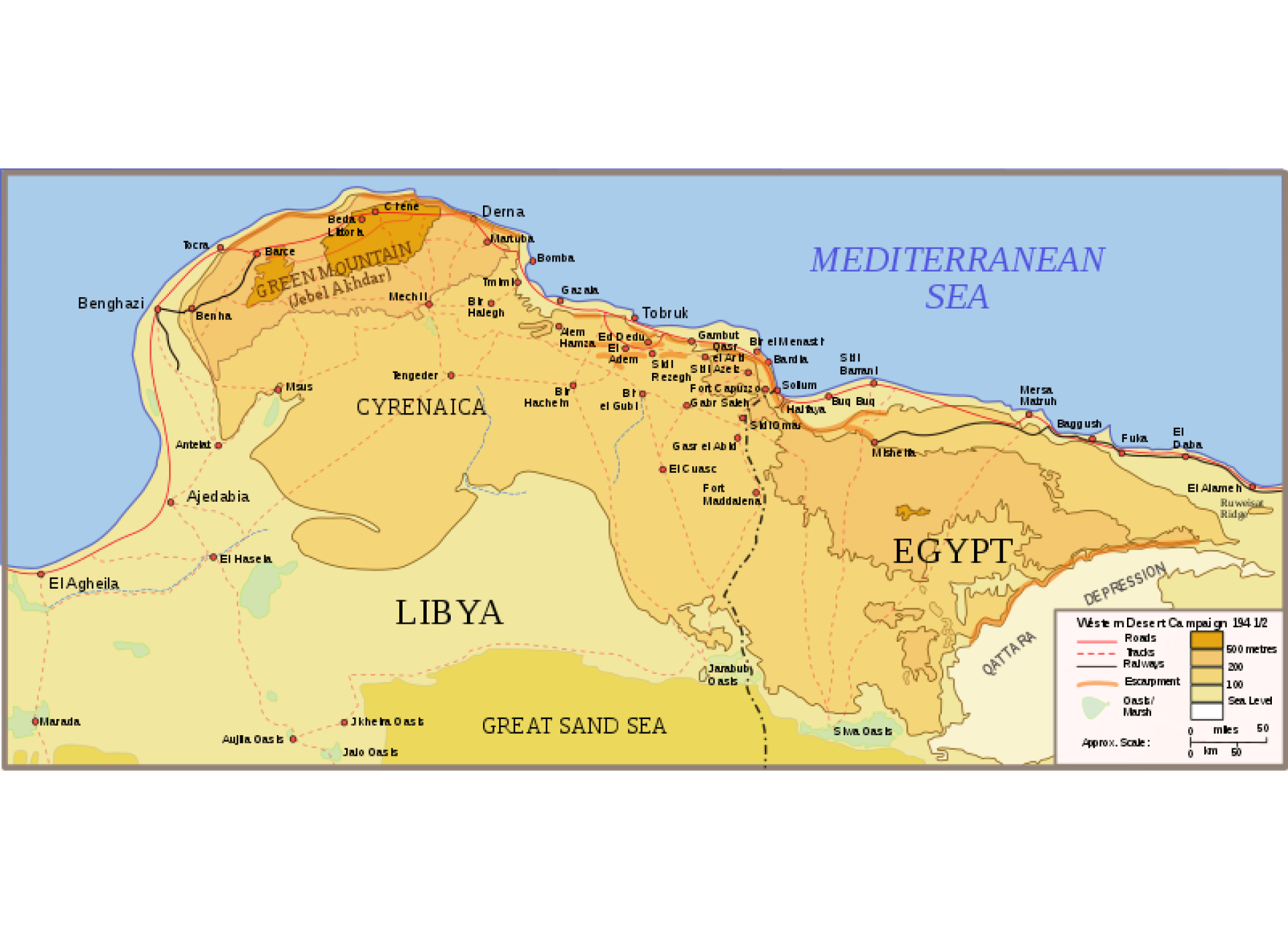
Wikimedia Commons, author Stephen Kirrage.
Formation of the LRDG
Formed in July 1940, by Major Ralph Bagnold, and originally called the Long Range Patrol, the LRDG grew and changed to its more well known name. Bagnold had had a pre-war career as a geologist and explorer, crossing the Libyan desert in the 1930’s using automobiles. He also created the Bagnold sun compass, which was superior to other sun compasses and unlike magnetic compasses was not affected by the metal of the vehicles and could be used while driving. His sister is a little more famous as the novelist who wrote National Velvet.
The LRDG was a volunteer force, and it had at its peak 350 members. If one sifts through the growing literature of histories of the British Special Forces during World War II, it seems that all authors are contractually obligated to note that the British military establishment looked with disfavor on special forces as “private armies.” Despite this alleged disfavor, the number of special raiding forces grew, especially in the Western Desert campaign. The Eighth Army as a whole was a diverse army, with entire divisions from Australia, New Zealand, India, Rhodesia, and South Africa. The LRDG reflected this diversity and initially most of the Group were New Zealanders and were soon joined by recruits from Indian and Rhodesian regiments, in addition to soldiers from British Army units.
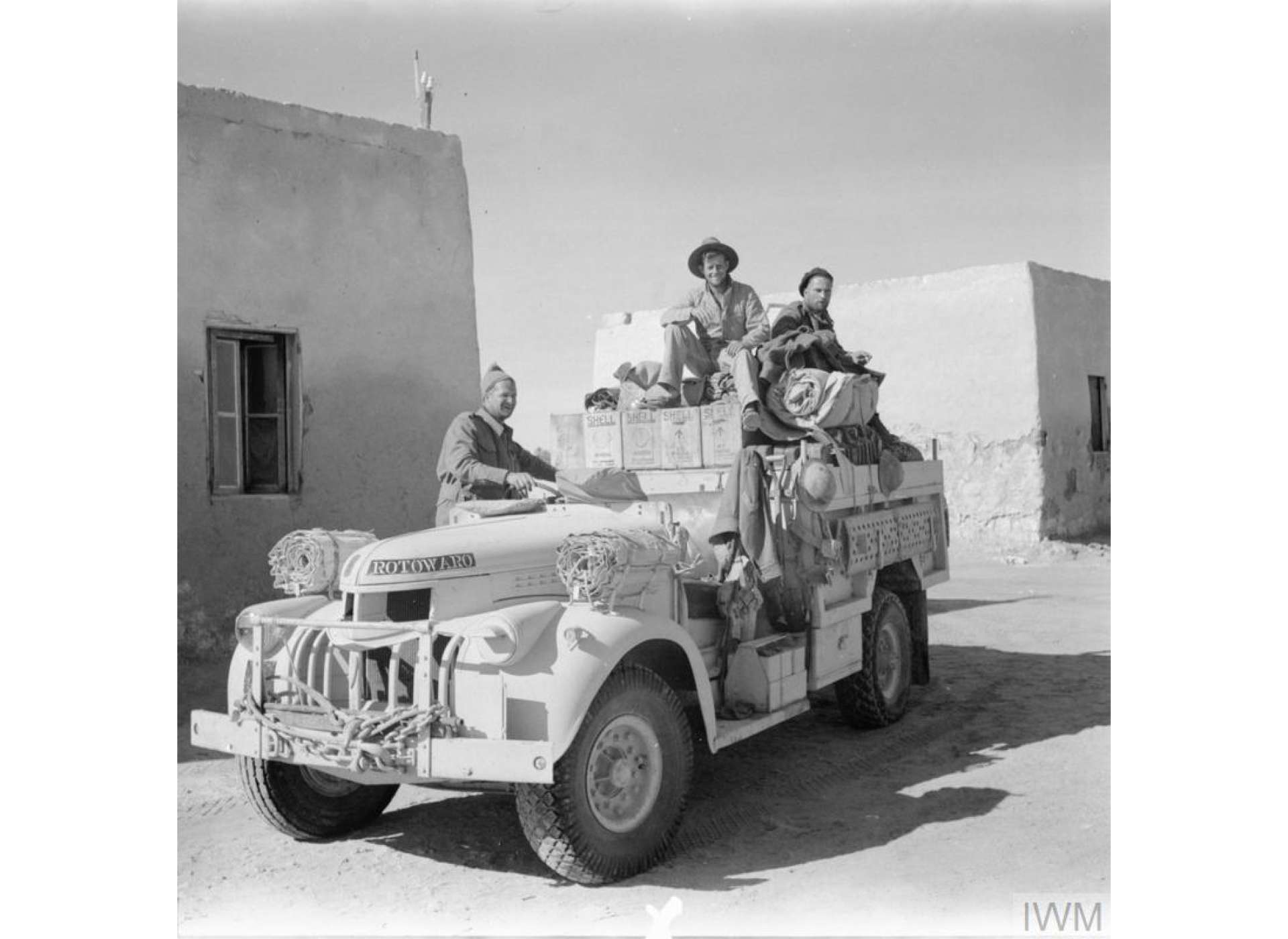
A Chevrolet truck setting off on patrol from Siwa. This was a New Zealand patrol many of whom joined the Long Range Desert Group in 1940 from troops who found themselves at Alexandria without their arms and equipment, which had been lost at sea. Note the word Rotowaro on the bonnet of the truck. Rotowaro was a small mining village in the northern island of New Zealand.
One of the remarkable aspects of the LRDG is the enormous amount of time it spent behind enemy lines. It frequently operated from a base in the Jalo Oasis, in central Libya at the edge of the Great Sand Sea, and at other times from the Siwa Oasis in southern Egypt.
The LRDG was divided into Squadrons, in the manner of cavalry regiments, and these Squadrons were divided into Patrols, the size of which fluctuated throughout the desert campaign. Patrols were initially composed of 2 officers and 28 non-commissioned and enlisted men, in 11 specially modified trucks. This was later reduced to 1 officer and 15 other ranks in six vehicles. The vehicles of choice were Ford or Chevrolet 30 cwt trucks that were armed with a variety of machine guns, such as the Lewis Gun, Vickers .303s. and eventually Browning .30 and .50 calibre machine guns. Some trucks were mounted with the Boys Anti Tank Rifles and the more effective, but increasingly obsolescent, 37mm Bofors gun. The trucks were stripped down to reduce weight with the roof, doors and other amenities removed and larger radiators installed. Around July 1942, following the entry of the US into the war, the patrol commanding officer and the leading patrol sergeant were equipped with Willys Jeeps.
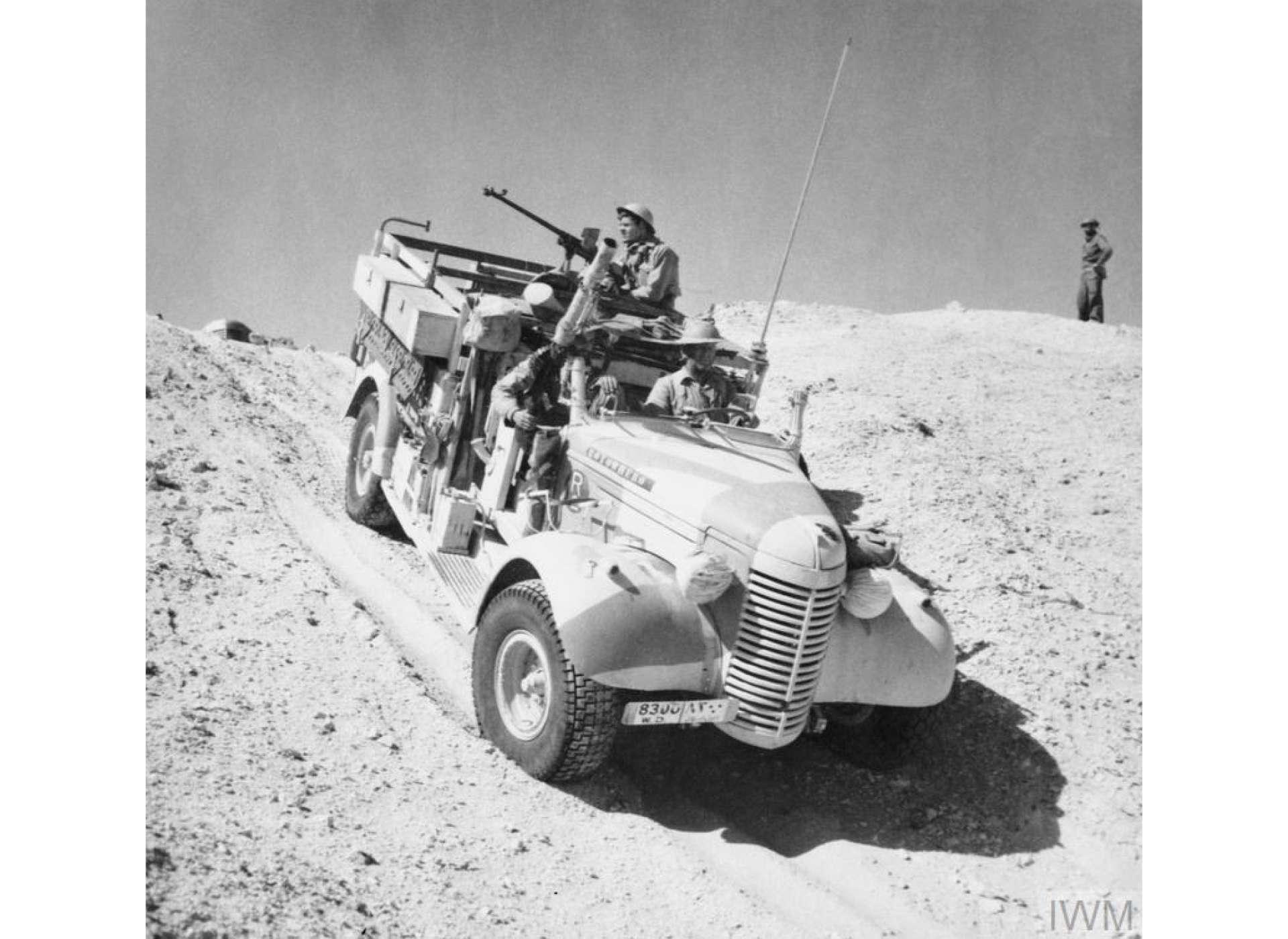
A Long Range Desert Group Chevrolet 30cwt truck negotiates the slope of a sand dune during a patrol in the desert, 27 March 1941. Note the Boys Anti Tank rifle.
Although the LRDG was focused on scouting and reconnaissance it could serve as a well armed fighting force that often inflicted, in the best Rat Patrol style, serious damage to larger enemy forces. For example, in September, 1942, the LRDG took part in a series of attacks (Operation Caravan) in conjunction with the SAS and Royal Marine Commandoes, with the LRDG attacking the Italian Army at Barce, inflicting casualties and destroying 35 aircraft.
Partnership with the SAS
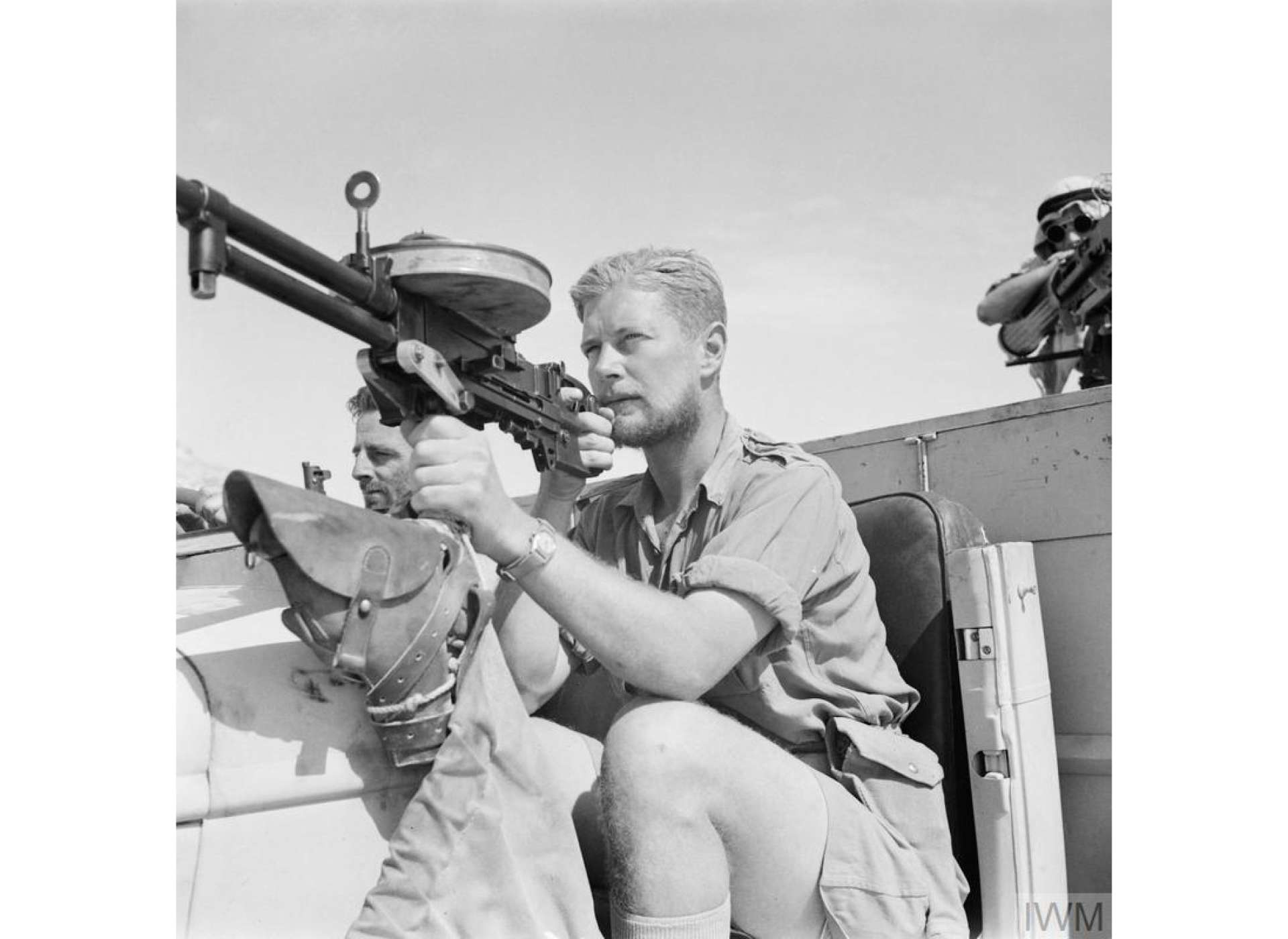
A member of a LRDG patrol with a Vickers 'K' machine gun on a Chevrolet 30-cwt truck, May 1942.
Established in July 1941, the SAS was so named as part of a deception plan to convince the Axis that a full parachute regiment was in the region. Nonetheless, the SAS consisted initially of only 5 officers and 60 men. The SAS were trained as parachutists but the unit’s first drop behind enemy lines in November 1941 was a disaster, with one third of the unit killed or captured.
The SAS may well have been disbanded if it had not been for the successful raid on three German and Italian airfields, in which the LRDG provided the transport to the enemy bases. Approximately 60 enemy aircraft were destroyed with minimal loss to the SAS.
On an attack on Sirte, in December 1941, the SAS and LRDG developed a new attack technique: driving their trucks at speed between the rows of aircraft, riddling those planes with machine guns and flinging grenades. The success of this method made this the SAS’s preferred form of attack. By 1942, the SAS had learned enough from the LRDG that the SAS could operate independently and used its own jeeps to attack German airfields. But an excellent argument can be made that without the LRDG the SAS could easily have disappeared into obscurity as a failed experiment.
The Road Watch
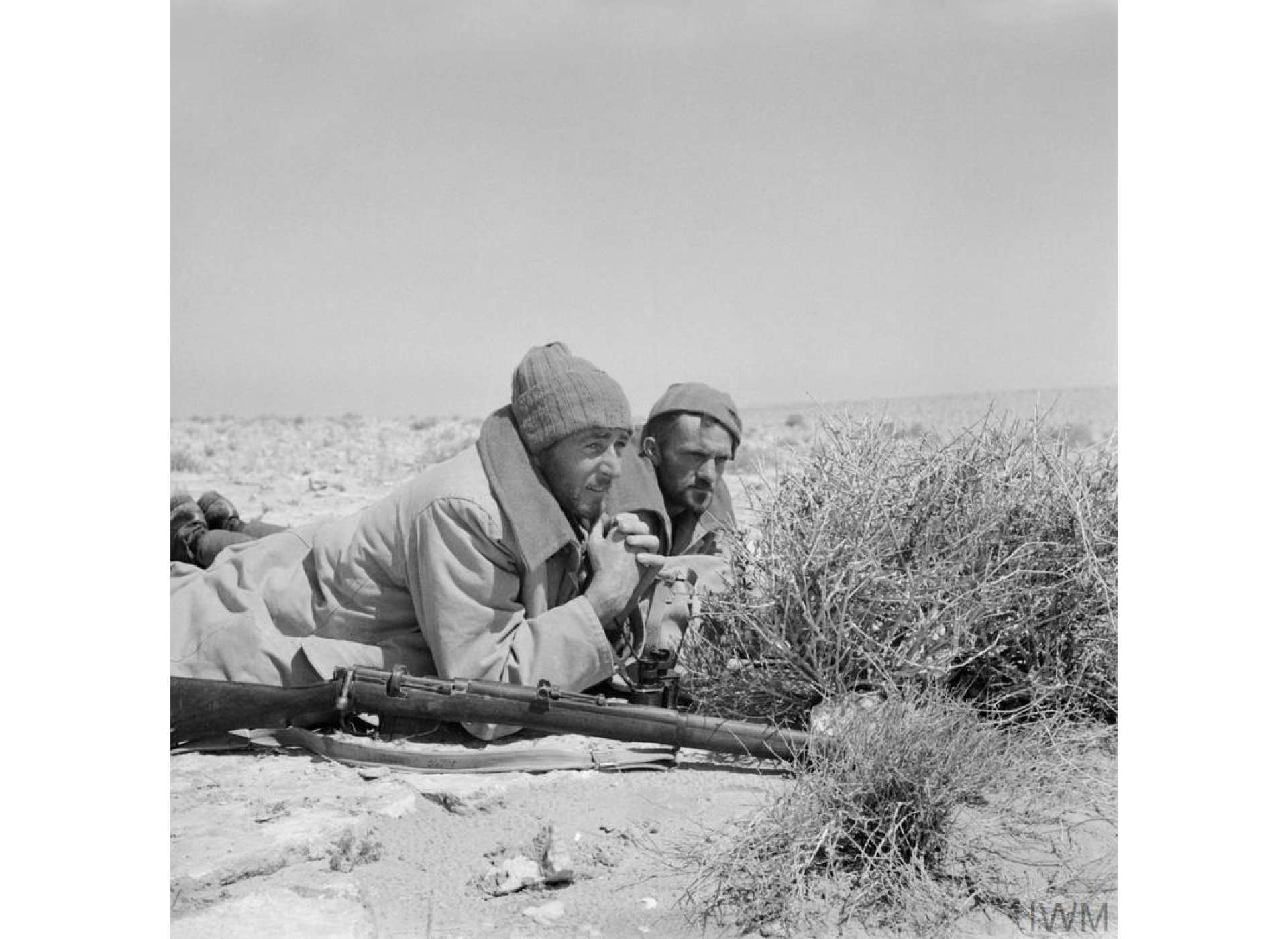
Two men of a LRDG patrol, dressed in greatcoats, on a road watch in North Africa, 25 May 1942.
One of the most important missions the LRDG carried out was the Road Watch, in which LRDG patrols lay hidden and observed Axis traffic along the road between Tripoli and Benghazi known as the Via Balbia. Hidden in camouflaged positions as close as 300 yards from the road, LRDG troopers would observe German and Italian vehicles and estimate troops strength. The LRDG had a three patrol rotation system, where one patrol was on road watch for a week observing enemy movements, one patrol was leaving the LRDG base at the Siwa Oasis about 30 miles from the Libyan border, to relieve the patrol on station, and the third patrol was returning to Siwa for a full debriefing. During the critical period between March and July of 1942, the LRDG had practically 24 hour surveillance of the road. After the fall of Tobruk, the LRDG was forced to abandon Siwa as a base.
As the war in North Africa progressed, the LRDG completed its last mission in Tunisia, as the lead scout for the New Zealand 2nd Division as that unit skirted the Germans’ Mareth Line. As the desert war ended, the LRDG began looking for a new role to play. The unit was shuttled around Italy, Albania, what was then Yugoslavia, and Greece, often parachuting behind enemy lines to sabotage roads and airfields. With the war in Europe ending, the LRDG leadership requested a transfer to the Pacific theatre but the War Office decided against this request as there were already other commando units operating in Asia.
The LRDG was disbanded in August 1945. This was not uncommon as many other special forces units, such as the British Army Commandos, and the SAS itself were disbanded as well.
A 1958 movie, Sea of Sand, portrays a fictional LRDG raid during the 2nd Battle of El Alemein, but other than that the LRDG began to fade from public attention. A small fraction of American viewers probably had any idea that The Rat Patrol was based on a British unit. It has only been in the last several years that new books and documentaries about the LRDG have brought renewed attention to the Group and its accomplishments. Fortunately, a part of the LRDG lives on in the current SAS Mobility Troop. The Troop has until recently been equipped with modified Land Rover 110s with multiple machine guns attached and trained in desert warfare among other regions.
Walter Wolf III
Walter Wolf joined the Museum in October 2019 as the Museum’s first intellectual property Rights Manager in the Curatorial Department. Walter has a Bachelor’s degree in Modern European History and a Juris Doctor degree in law. He also has a certificate in Espionage and Covert Operations from the University of New Orleans.
Cite this article:
MLA Citation:
APA Citation:
Chicago Style Citation:
